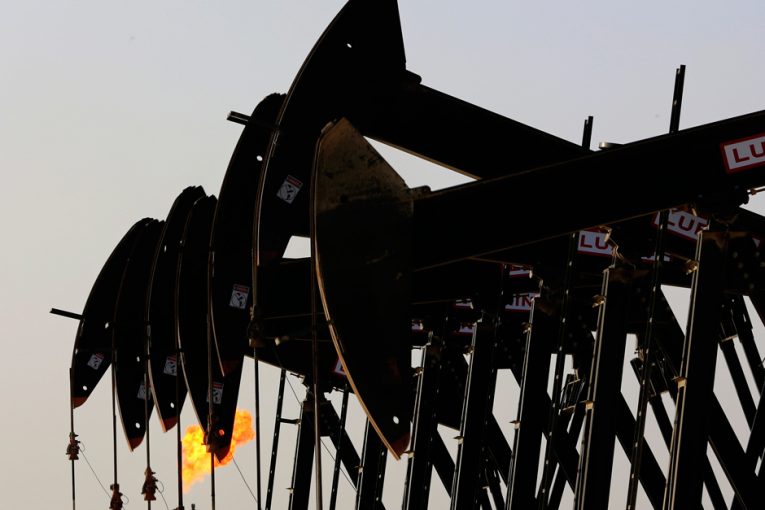
Canadian oil production could edge closer to the five million barrel-per-day milestone in 2018, with supplies expected to grow the second fastest among major producers in coming years, a new report says.
In its monthly oil report released Wednesday, the Paris-based International Energy Agency said Canadian oil output is expected to rise by 290,000 bpd this year, and by another 200,000 bpd in 2018 to reach 4.95 million bpd. The IEA’s estimates for Canadian oil output were revised upward due to “robust production” across the sector, particularly in the oilsands.
The IEA report also estimated U.S. oil production will grow 470,000 bpd in 2017, and as much as 1.1 million bpd in 2018. The country remains the fastest-growing non-OPEC producer in the world, just ahead of Canada.
Together, the 2.06-million bpd surge in North American production over the next two years could offset any new measure by OPEC to extend its 1.8 million bpd cut beyond March 2018 — an idea that appears to be gaining support among OPEC members and its allies.
U.S. crude futures rose 1.1 per cent, to US$48.75 per barrel, after the IEA report also noted that global crude inventories were starting to decline.
Canadian oil production has risen faster than most countries since oil markets collapsed three years ago, as oilsands expansion projects that were commissioned years ago began to come online. If the momentum continues next year, Canada could displace Iraq as the fourth largest producer in the world after the United States, Russia and Saudi Arabia. Iraq produced an average of 4.5 million bpd in the first half of 2017 and is not expected to see a sharp rise in production in the next 18 months.
Oilsands production is expected to meet the 3 million bpd threshold by the end of 2018, up from around 2.7 million bpd today. Total Canadian oil supply is expected to near the 4.95 million bpd mark in 2018, and could surpass 5 million bpd in the second half of the year.
The uptick is mainly due to production growth at Suncor Energy Inc.’s Fort Hills oilsands mine and the Hebron project in offshore Newfoundland and Labrador, operated by a consortium including Suncor, ExxonMobil Corp., Chevron Corp. and others. Construction of Fort Hills is 90 per cent complete, while Hebron is expected to reach first oil this year.
Suncor has raised the nameplate capacity of its Fort Hills project from 180,000 bpd to 194,000 bpd, and has raised its capital spending program to complete production at the development. Costs for the venture have also risen for the project, and now stand at $17 billion, according to the IEA.
Suncor’s joint-venture partner on the project, Total SA, recently said it wouldn’t raise its spending on the project any further, and has openly contemplated further reducing its stake in the development after reducing its position to 29.2 per cent in 2015.
The report comes amid dimming prospects for long-term oilsands growth, as depressed prices has spurred several international oil companies to shed their positions in northern Alberta. Oilsands production is expected to grow over the next five years, but could see flattening supplies soon after 2020, analysts say.
Companies including Royal Dutch Shell PLC and ConocoPhillips Co. have divested more than $20 billion in oilsands assets since the beginning of 2017, and other producers like Statoil ASA and Total have pared their exposure to the region.
Persistently low oil prices have also raised questions over the economics of major pipeline proposals in Canada.
Most analysts expect oil production levels in Canada to outpace pipeline capacity in coming years as new oilsands production enters the market. But the potential construction of two new oil conduits, TransCanada Corp.’s Keystone XL and Kinder Morgan Canada Ltd.’s Trans Mountain expansion project, could sop up excess supply by around 2020.
Recent reports suggest TransCanada is still securing shipper commitments on the last bit of available space in its Keystone XL line, while analysts have questioned the long-term viability of its 1.1-million bpd Energy East project.
The company put a temporary pause on the project days after the National Energy Board decided to expand its review of the proposal to include upstream and downstream emissions.
Some argue that building the pipelines won’t improve the economics of Canadian heavy oil producers in the first place.
In a policy briefing released Wednesday, Centre for International Governance Innovation senior fellow Jeff Rubin argued that building pipeline capacity to tidewater wouldn’t actually fetch higher prices for Canadian bitumen, because it is not a fungible product and ultimately has a limited number of end buyers.
“It is an inferior crude with high sulphur content that must first be upgraded before most refineries can use it as a feedstock,” he wrote in the briefing.
Meanwhile, oil markets have remained depressed over fears that U.S. shale producers will continue to defy expectations and pump record-levels of crude.
Brazil and Kazakhstan are expected to see the next-highest oil supply growth among non-OPEC members, while Mexico, Colombia, Azerbaijan, Egypt and China have continued to see declining outputs, according to the IEA.
You can read more of the news on source
